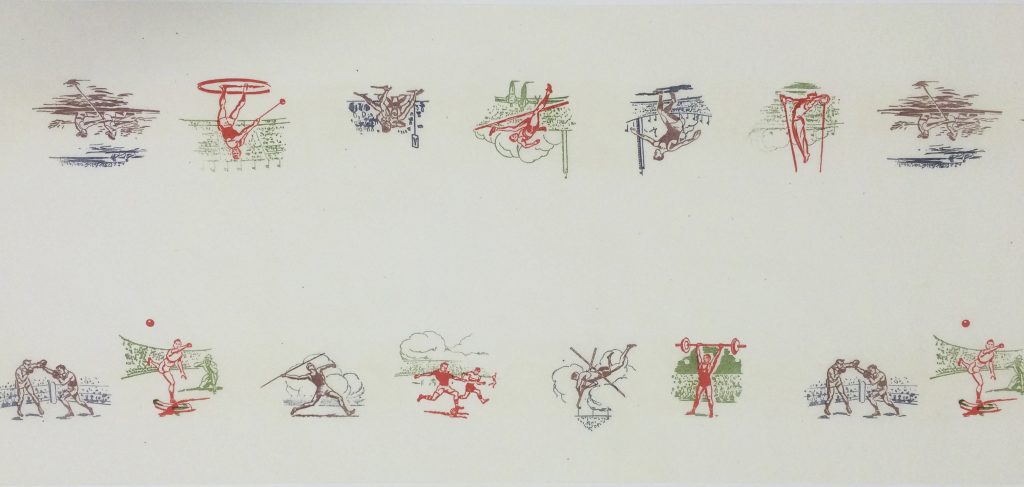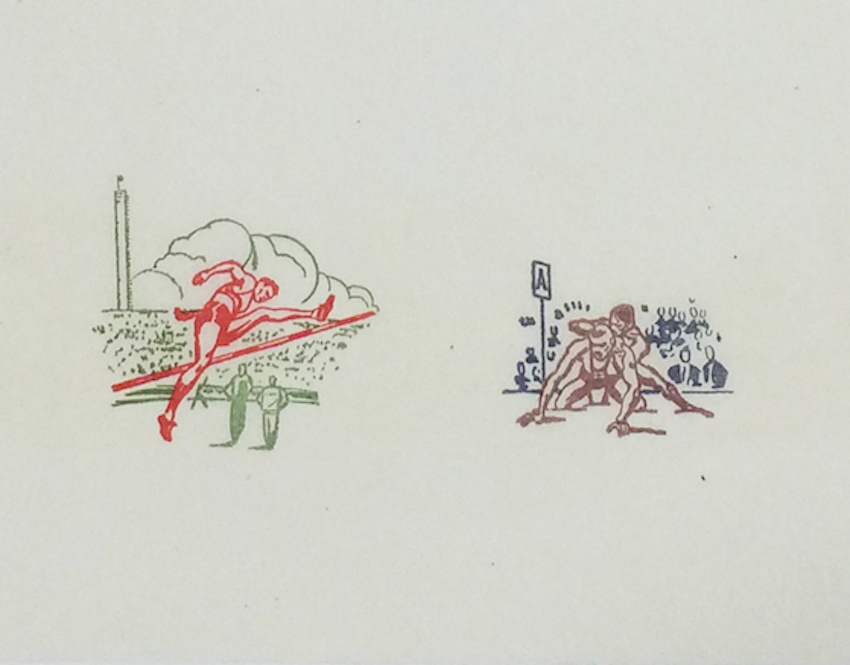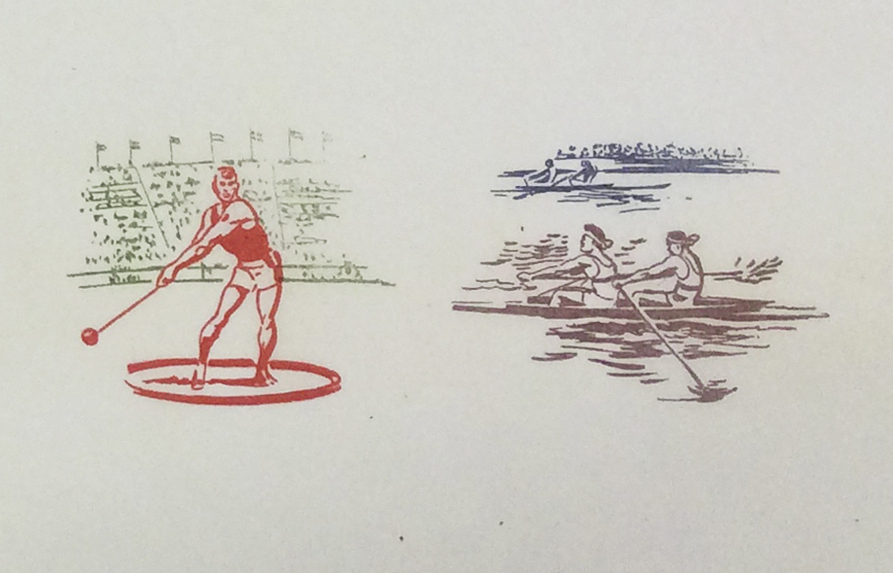Table runner with Olympics Theme
The Helsinki Olympic Games in 1952 belong to the most important events in Finland. An important international sporting event was also visible in daily paper products. A table runner by the name Kisa (Competition) manufactured by G. A. Serlachius Ltd, Mänttä mills has been included in the object collection of the Serlachius Museums.
The table runner made of crepe paper has been decorated with red-and-green as well as blue-and-brown drawings that depict different Olympic sports. An entity of twelve drawings is about 60 cm long and is repeated as a continuous string of images in the runner sold in rolls. The width of the roll is about 34 cm. Compared to the modern nonwoven disposable tablecloths the material is quite thin and resembles the exam table paper used in the health care rather than a tablecloth.
The Olympic sports depicted in the illustration are weight lifting, boxing, shot put, javelin throw, football, pole vault, gymnastics, sweep rowing, hammer throw, wrestling, high jump and discus throw. In the light of the statistics, the choice of the sports has been quite natural: in the early 20th century, Finland has had success up to the medal level in many of the chosen sports. It is a surprise that running has not been included among the decorative images, because since 1912 Finland had won a medal in running sports in every summer Olympic games before the Second World War. In the London Olympics of 1948, Finnish athletes did not reach the podium in this sport, which meant that during the Helsinki Olympic year already 16 years had gone by since the latest Olympic medal in running.
In many of the images on the Kisa table runner, the background has a drawn image of a crowd of people and a row of flags. The round edges of the cumulus clouds remind one of the sunny blue skies with white clouds. Single drawings have visual details. In the image depicting wrestling, a Finnish athlete is competing while two figures are watching. They are sitting in the front row of the grandstand dressed in two-piece suits and ties. In the image depicting high jump you will find a couple of officials dressed in baggy sport suits, while the shot put competition, however, is photographed by an almost agent-like man in his poplin overcoat and hat. The recognisable figure of the tower of Helsinki stadium links the drawings to the first and, until now, the only Olympic games held in Finland.
All the athletes in the decorative images are men. Women competing especially in the athletics remained a highly controversial issue in the early 20th-century Finland. People thought it was anaesthetic and indecent. The sports journalism representing this view shaped the people’s way of thinking and general opinion was negative toward women’s competitive sports. In the Paris Olympics of 1924 the Finnish team had no female participants. Four years later there were a couple of women competing in swimming. Female athletes could not represent Finland in the athletics until in Berlin in 1936. Since there were so few female athletes, it was clear that they could not bring home nearly as many medals as the men did in their series. The first Finnish woman to win a medal in summer Olympics was Kaisa Parviainen, who won a silver medal in the javelin throw in the London 1948 Olympics.
Many firms manufactured products related to Helsinki Olympic games. Beside the table runner of creped paper G. A. Serlachius Ltd. manufactured also napkins decorated with similar kind of drawings as well as with the Olympic Rings. With their masculine illustrations they form a clear exception to other table setting products that almost always had rather feminine decorative motifs.
Milla Sinivuori-Hakanen
Curator




